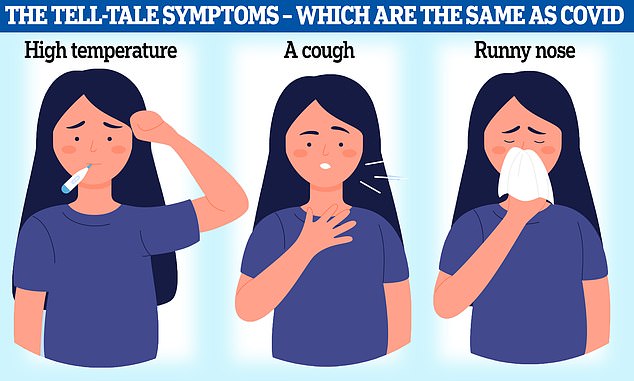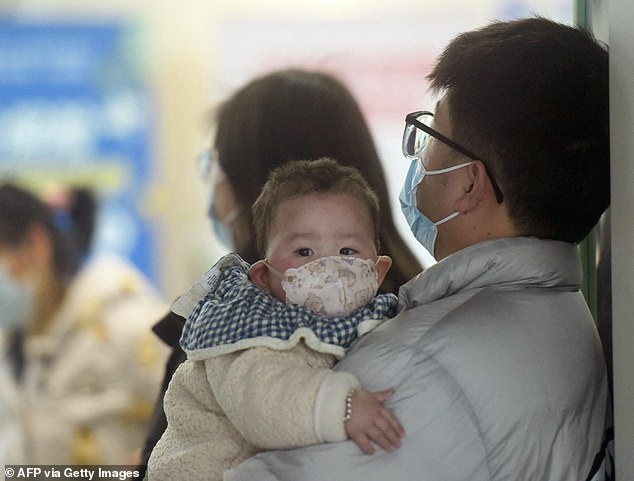Fresh fears have emerged over the threat of the “mystery” hMPV virus which has been claimed to be behind the wave of hospitalizations in China and which is now increasing globally.
Middle-aged patients tested positive for the virus and developed pneumonia “three to five days later,” according to new unconfirmed reports, based on videos shared via the Chinese social media app Weibo.
Another Weibo user said that, according to YouTube channel Decoding China, the situation was “worse than in 2022,” when a Covid-19 outbreak in Shanghai prompted mass testing and strict lockdown conditions.
Even more worrying, one user claimed that children “suddenly die” after suffering a drop in heart rate, according to reports from The Star and the Mirror.
Concerns first emerged in early January, when images emerged of hospitals in China apparently being overrun, drawing comparisons to the early days of Covid.
Videos show patients in face masks crowding emergency rooms and parents holding sick children in long lines at pediatric units.
Local news reports blamed hMPV (human metapneumovirus), a little-known but not uncommon virus that typically causes a mild, cold-like illness.
The elderly, the very young and those with pre-existing conditions may be the most affected.
The U.S. Centers for Disease Control reports that 2.2 percent of tests conducted across the United States in the week ending Jan. 4 were positive for hMPV, an increase from 25 percent over a week.
As with all respiratory infections, a major risk is pneumonia, a life-threatening lung condition that can develop within days.
Experts around the world have called on Chinese authorities to reveal crucial details of the outbreak as cases began to rise in the United Kingdom and the United States.
According to UK surveillance data, around one in 20 non-flu respiratory infections are now due to hMPV, more than double the number at the beginning of December.
And in the United States, the Centers for Disease Control reported yesterday that one in 50 Americans with a cough probably had the virus, an increase of 25 percent in one week.
Despite this, the numbers are not unusual for this time of year and doctors assured Americans that hMPV is mild for most.
The World Health Organization also sought to quell the growing uncertainty, adding that the situation in China is “not unusual.”
The global health agency said respiratory infection rates were within the normal range expected for winter, and no unusual outbreaks were reported.
Health officials also claimed that infections had peaked and were now declining.

hMPV is in the same family as respiratory syncytial virus (RSV) and typically causes little more than fever, cough, and nasal congestion.

Concerns first emerged in early January, when images emerged of hospitals in China apparently being overrun, drawing comparisons to the early days of Covid.
“At present, the positive case rate of hMPV detection is fluctuating and the positive case rate in northern provinces is decreasing,” Wang Liping, a researcher with the Chinese Center for Disease Control and Prevention, said on Sunday. .
The new images, which have not been seen by MailOnline, may increase pressure on health chiefs to offer an update to reassure the public.
hMPV is in the same family as respiratory syncytial virus (RSV) and typically causes little more than fever, cough, and nasal congestion.
The virus was first “discovered” in 2001, but is believed to have been one of numerous viruses in circulation that cause common colds for many decades, if not longer.
Speaking last week, virus expert Dr Andrew Catchpole said: “hMPV is usually detected in winter periods, but it appears severe infection rates may be higher in China than we would expect in a normal year. “.
He added: “It is not clear how high the numbers are or whether the problems arise simply from coinciding with high levels of flu and Covid.”
Dr. Catchpole noted that while hMPV “mutates and changes over time with the emergence of new strains,” it is “not a virus that is considered to have pandemic potential.”


